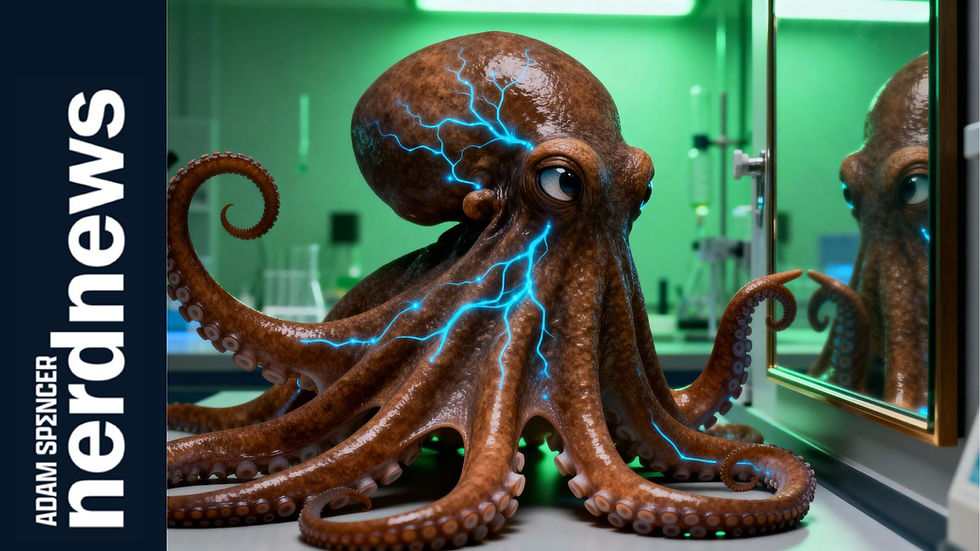Octopuses and the rubber tentacle illusion
- Adam Spencer

- Nov 6
- 2 min read
Octopuses fall for the human “rubber hand illusion”, suggesting you don’t need a central brain to feel what’s yours.
Who owns this tentacle?
In humans, the “rubber hand illusion” is simple.
You hide your real hand and watch a fake one being stroked in sync.
Soon enough, your brain adopts the rubber hand as its own.
If you see someone hit the fake hand with a hammer, you’ll flinch and recoil.
You might even dream about it later.
It is a mind-mess of body ownership.
Fooling the brain into thinking, “Yep, that’s me.”
Now, scientists have tried it on octopuses.
And it worked.
This is the first time this illusion has ever been demonstrated in a non-mammal. Until now, only humans and a handful of mammals could be so fooled.
Eight tentacles, one feeling
Researchers from the Max Delbrück Center and the Hebrew University of Jerusalem, reporting in Current Biology, revealed that when octopuses were shown a fake tentacle being touched in sync with one of their own, the animals responded as if the falsie was part of their body.
The mimic tentacle wasn’t even attached. But synchronised vision and touch convinced the animals.
When strokes were out of sync with the touch the illusion collapsed and the octopuses saw through the game.
The octopuses showed defensive responses. They changed colour, retracted tentacles, even fled when the fake arm was “hurt”, just as humans flinch when their adopted rubber hand is struck.
It seems that they perceived the fake limb as belonging to themselves.
This suggests their distributed nervous system can still form a unified sense of body, at least temporarily.
“We didn’t expect such a clear reaction. It means their tentacles and central brain communicate more about touch and sight than we realised.” Dr Tamar Gutnick, neuroethologist and lead author of the study. (Current Biology, Oct 2025)
Distributed minds
Humans have about 86 billion neurons packed into our centralised brains.
An octopus has about 500 million neurons, with two-thirds in its tentacles.
Each tentacle can taste, move and make decisions locally. Yet somehow, the octopus can still integrate information from all eight into one fluid, coordinated animal.
This doesn’t mean octopuses have human-style selves. But it does suggest you don’t need a massive cortex to link ‘what I see’ with ‘what I feel.’
That matching is one of the key elements of having a sense of your body.
The feeling that your parts belong to you.
Humans do that in a single central brain.
Octopuses seem to manage it through a network spread across eight tentacles.
Which hints that self-awareness might be more basic, more flexible, and far stranger than we have imagined.
Why this matters
One of the deepest and most challenging questions a thinking, conscious human can ponder is “what does it mean to realize that I am me?”. Deep stuff, hey?
These illusions reveal that a significant part of our own feeling of body ownership is stitched together from simple, coordinated sensory cues.
Octopuses do it without human-style brains, suggesting self-awareness could be more basic and more bendy than we ever imagined.
As if those questions weren’t hard enough already.
I might just stroke my chin with my preferred tentacle and think about this a bit more.
-Adam S





Comments